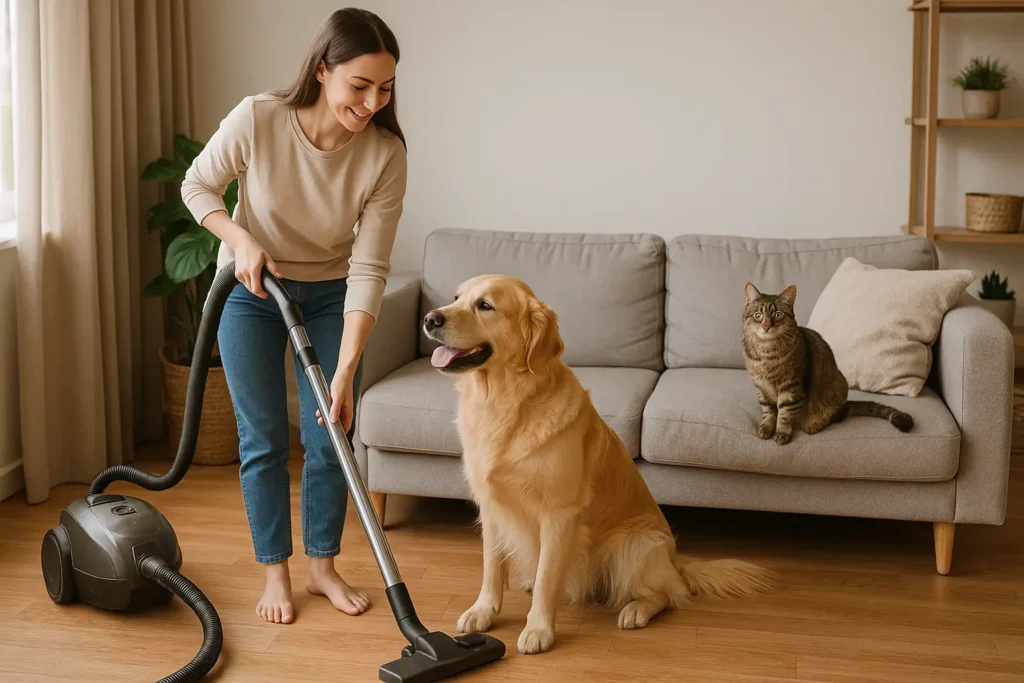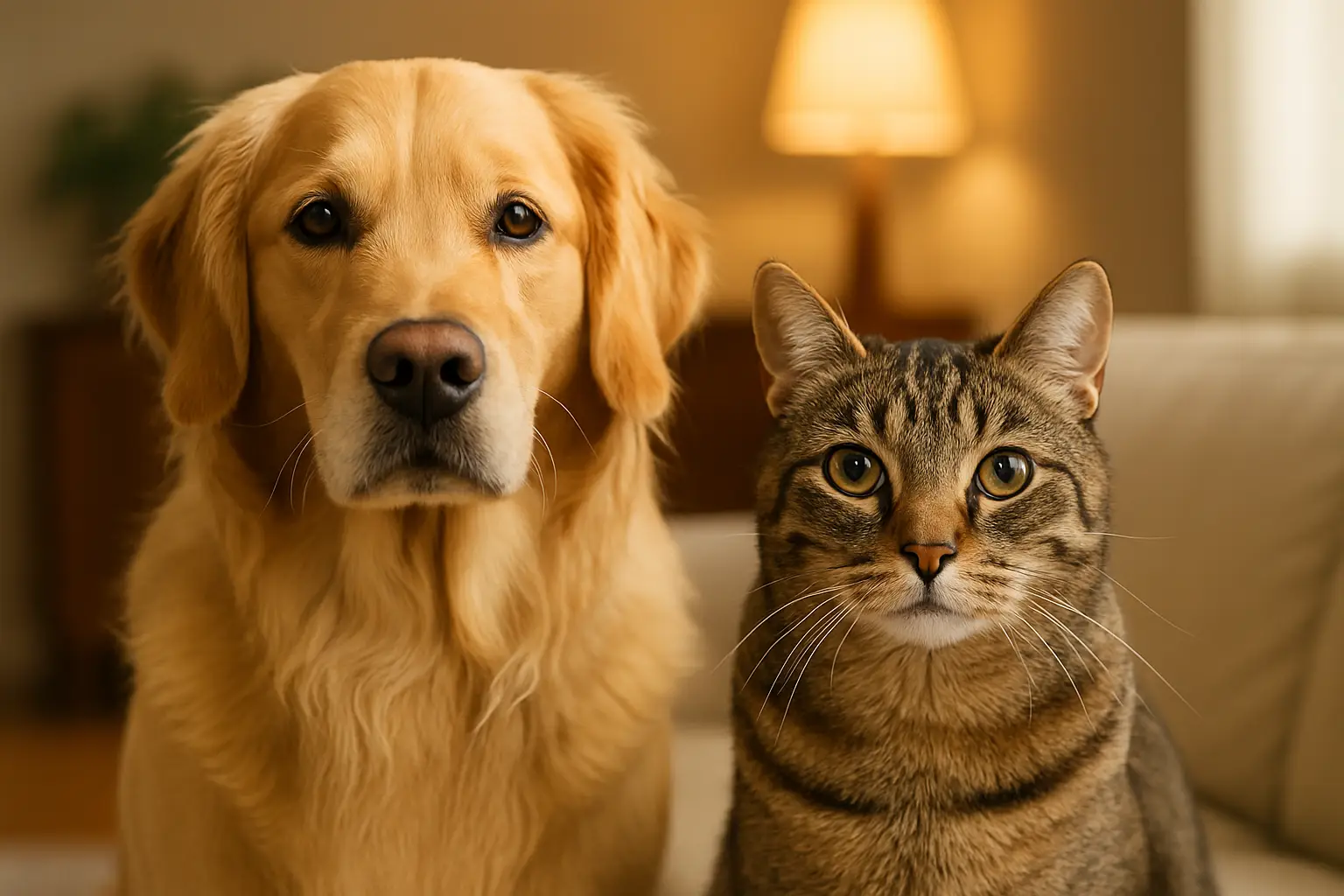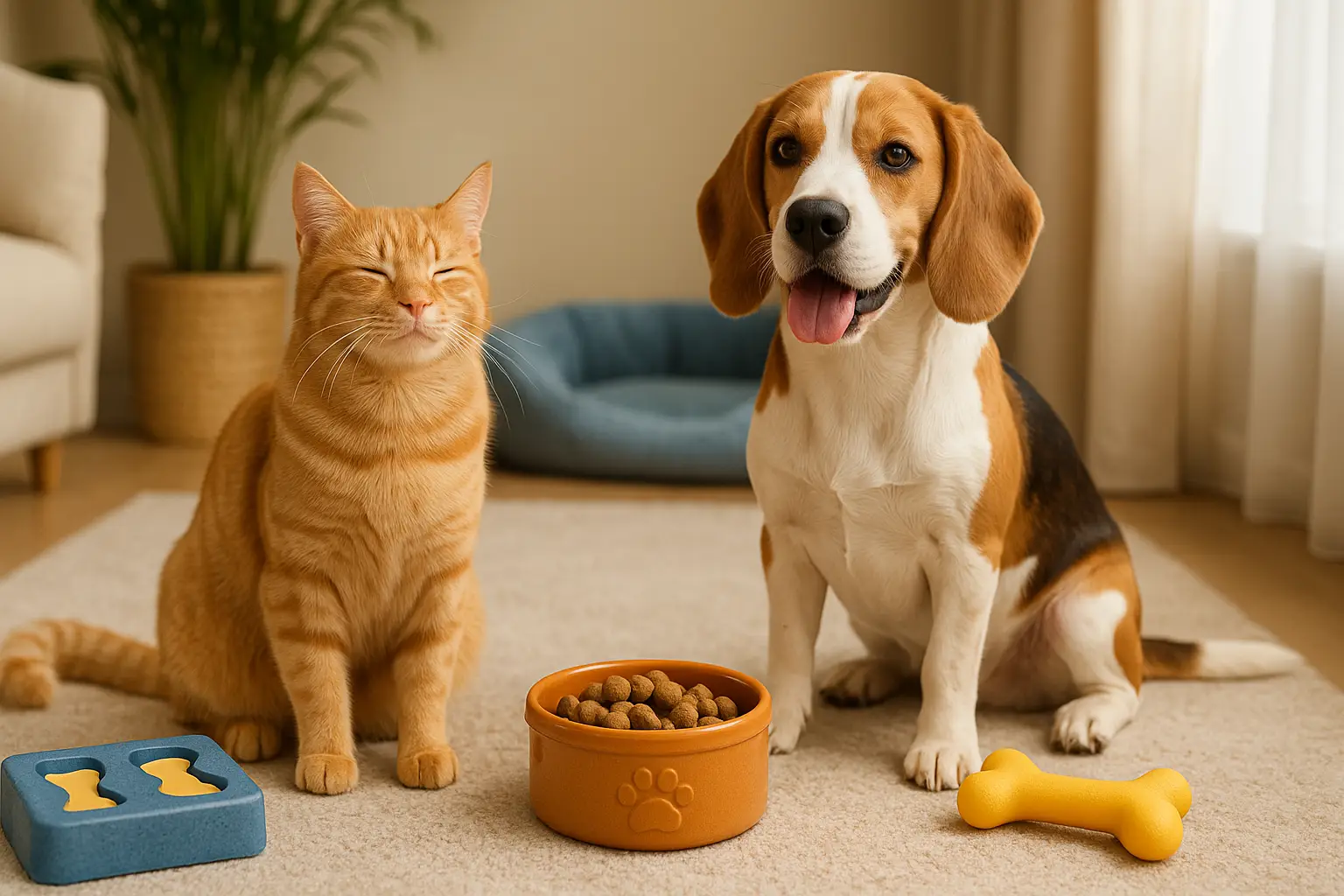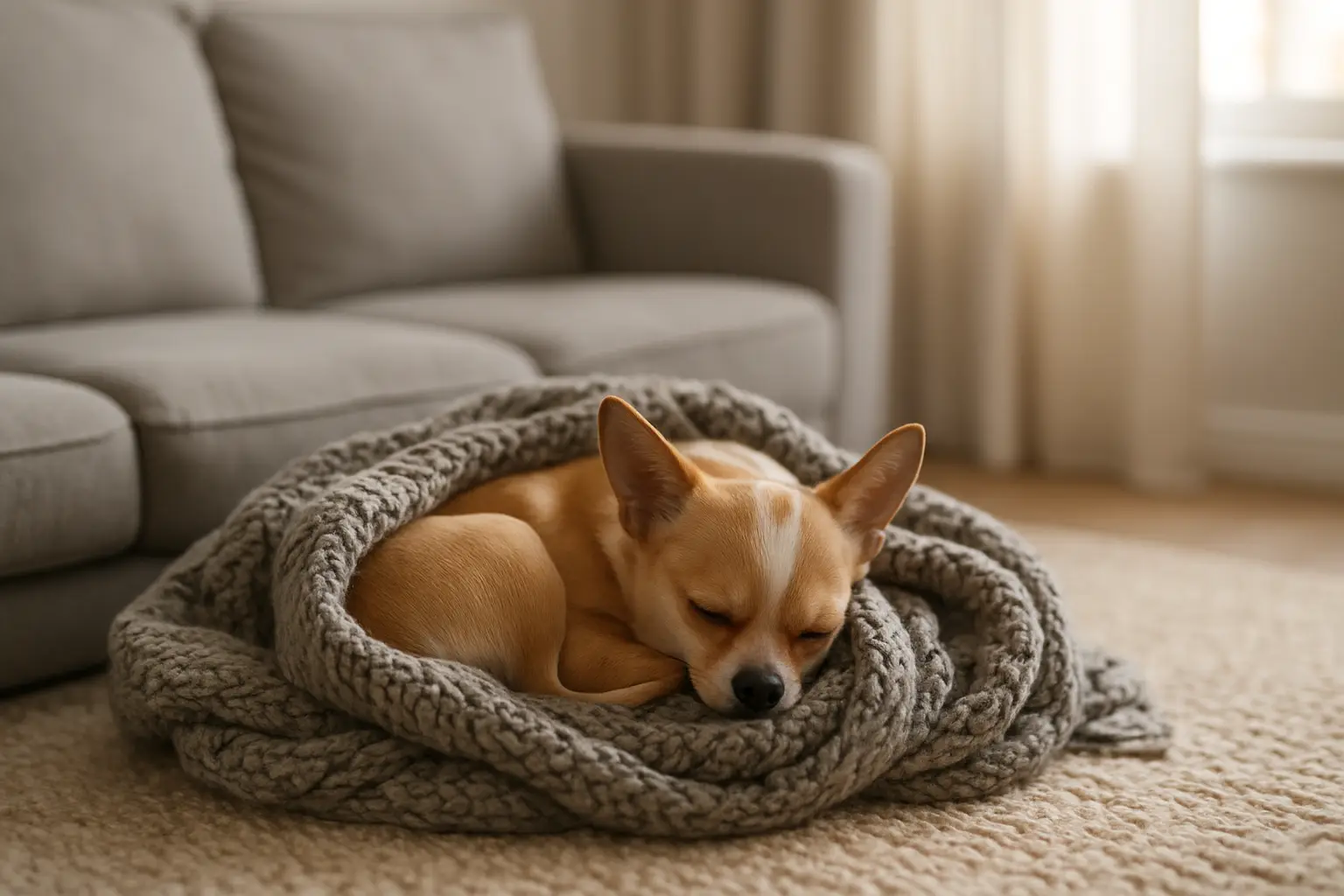How to Keep Your House Clean While Living with Dogs and Cats
Living with pets brings endless love, companionship, and unforgettable moments. But it also brings fur on the furniture, muddy paw prints, mystery smells, and the occasional accident. While dogs and cats fill our homes with life, they can also challenge even the most committed neat freaks.
Fortunately, maintaining a clean home while living with pets is not only possible—it can become a manageable, even seamless part of your daily life. In this comprehensive guide, you’ll learn practical, realistic, and pet-friendly strategies to keep your home fresh, hygienic, and fur-free (or at least fur-controlled) without sacrificing the comfort or happiness of your beloved companions.

Why Cleanliness Matters in a Pet-Friendly Home
Before diving into the practical tips, let’s understand why keeping a clean environment is essential—not just for you, but for your pets:
- Reduces allergens and odors
- Minimizes the spread of bacteria and parasites
- Prevents buildup of pet hair, dander, and dirt
- Promotes a healthier, calmer environment for pets and humans alike
- Helps maintain furniture, flooring, and fabrics for longer
The goal isn’t perfection. It’s about finding a sustainable routine that works for your lifestyle and keeps both your home and your pets happy and healthy.
Establishing Daily Cleaning Habits
1. Stick to a Cleaning Schedule
You don’t have to deep-clean every day, but spreading out small tasks across the week helps reduce buildup.
Example routine:
- Daily: Sweep/vacuum pet areas, wipe paws after walks, wash food/water bowls
- Weekly: Mop floors, wash bedding, deep vacuum furniture
- Monthly: Clean baseboards, wash pet toys, inspect corners for odors or messes
Using a checklist or setting calendar reminders helps make these habits automatic.
2. Spot-Clean as You Go
Don’t let messes pile up. Keep pet-safe cleaning wipes or a small spray bottle with vinegar and water around the house for quick clean-ups. Tackling little messes in real time is the secret to avoiding big messes later.
Controlling Pet Hair in Every Corner
One of the biggest challenges in pet-friendly homes is fur—on clothes, furniture, rugs, and even in your coffee. Here’s how to manage it effectively:
1. Vacuum Like a Pro
Invest in a pet-specific vacuum cleaner. Features to look for:
- HEPA filter
- Strong suction power
- Tangle-free brush roll
- Attachments for upholstery and tight corners
Vacuum at least 3 times a week in pet-heavy areas and once a week in lower-traffic rooms.
2. Use Lint Rollers and Rubber Gloves
Keep lint rollers handy near the sofa, bed, or entryway. For fabric surfaces, rubber gloves or a damp sponge can lift fur better than many tools. Simply dampen and wipe in a circular motion.
3. Groom Your Pet Regularly
Brush your dog or cat frequently to remove loose hair before it falls all over your house. This also reduces allergens and strengthens your bond.
- Short-haired pets: 1–2 times per week
- Long-haired pets: Daily brushing is best
Place a washable mat or towel under your pet during grooming for easy cleanup.
Keeping Floors Fresh and Fur-Free
Pets track in dirt, litter, leaves, and more. Here’s how to keep your floors looking (and smelling) clean.
1. Choose Pet-Friendly Flooring
If you’re renovating or planning ahead, go for surfaces like:
- Tile
- Hardwood (sealed)
- Vinyl or laminate
- Low-pile, stain-resistant carpets
Avoid materials that trap fur or are hard to clean (like shag rugs or untreated wood).
2. Place Mats and Runners
Add washable mats near entrances to catch dirt and debris. Use runners in high-traffic areas and under litter boxes or food stations to protect the flooring.
3. Sweep and Mop Smart
Use a microfiber dry mop for daily hair pickup. For deeper cleaning:
- Avoid heavily scented cleaners that may irritate your pet’s nose
- Choose enzyme-based pet cleaners for areas with odor or messes
- Spot-test natural solutions like vinegar and baking soda before full use
Managing Pet Smells the Smart Way
Pet odors can sneak up on you, especially if you’re used to them. Fortunately, you can prevent and eliminate smells with some simple strategies.
1. Wash Bedding Weekly
Pet beds and blankets trap dander, oils, and odors. Wash all soft items your pet uses regularly, ideally once a week, using fragrance-free, pet-safe detergent.
2. Clean Toys and Gear
Hard toys, collars, leashes, and carriers should be washed monthly. Soak in a mix of water and vinegar or use gentle dish soap.
3. Open the Windows
Let fresh air circulate through your home every day, even just for 10 minutes. This alone does wonders for pet odor.
4. Use Natural Deodorizers
- Baking soda: Sprinkle on rugs before vacuuming
- Activated charcoal bags: Absorb smells in enclosed spaces
- Essential oil diffusers (used with caution): Avoid oils toxic to pets (e.g., tea tree, eucalyptus, citrus for cats)
Furniture and Upholstery Protection
1. Use Washable Covers
Protect sofas and beds with machine-washable throws or covers. Choose materials that don’t trap hair and are easy to shake out.
2. Restrict Access
Train your pet to stay off certain furniture. Use pet gates or place obstacles when needed.
3. Vacuum and Steam
Vacuum upholstered surfaces weekly, and use a steam cleaner monthly if possible. This deep-cleans and removes odors without harsh chemicals.
Entryway and Mudroom Strategies
This area is your first line of defense against dirt, mud, and debris.
1. Set Up a “Pet Cleaning Station”
- Keep a towel, wipes, and paw washer near the door
- Create a habit of wiping paws before letting pets in
- Train your dog to sit and wait for cleanup
2. Use a Doormat System
Two mats work better than one—one outside and one inside. Look for textured, absorbent doormats designed for pet households.
Litter Box and Potty Area Hygiene
Cats and dogs alike need clean, consistent bathroom routines.
1. For Cats: Keep the Litter Box Fresh
- Scoop litter daily (twice a day is ideal)
- Wash the box and change all litter weekly
- Use unscented, clumping litter for easier maintenance
- Place a mat under the box to catch stray grains
2. For Dogs: Manage Outdoor and Indoor Accidents
- Clean grass or yard areas of waste daily
- Use odor-neutralizing sprays for indoor accidents
- If using training pads indoors, change them often and clean beneath the pad
Laundry Tips for Pet Owners
Fur on clothes and bedding is inevitable—but treatable.
1. Pre-Treat Fur
Before washing, run items in the dryer for 10 minutes with no heat to loosen fur. Then wash with cold water and extra rinse cycles.
2. Use Vinegar in the Wash
Add ½ cup of white vinegar to your laundry to neutralize odors and loosen fur.
3. Clean the Washer and Dryer
Regularly check and clean the lint trap and run a cleaning cycle on your washer to avoid buildup.
Training Your Pet to Help Keep the House Clean
You can’t expect your dog or cat to mop floors, but with a little patience, you can train them to make fewer messes.
1. Use Positive Reinforcement
Reward good habits like wiping paws, staying in designated areas, or using the litter box properly.
2. Create Pet Zones
Designate certain rooms or areas for your pet’s primary use. This limits the spread of fur and dirt and simplifies your cleaning routine.
3. Stay Consistent
Routine builds reliability. Walks, feeding times, and potty breaks should be on a consistent schedule to reduce the chance of messes.
When to Deep Clean
Even with great daily habits, deep cleaning is essential:
- Seasonally (every 3–4 months)
- After illness or flea treatments
- If you’re hosting guests or traveling soon
This is the time to:
- Steam carpets
- Disinfect pet toys and bowls
- Wash curtains, cushions, and hard-to-reach areas
Final Thoughts: Clean Doesn’t Mean Sterile
Having a spotless, hairless, scentless home isn’t realistic if you’re living with animals—and that’s okay. Your home can be both clean and lived-in, tidy but joyful, fur-friendly yet fresh.
By making small daily efforts and choosing smart tools and strategies, you’ll create an environment where both you and your pets can thrive. A clean house doesn’t mean a pet-free home—it means a well-loved space where humans and animals coexist with comfort and care.




Post Comment